For someone who loves books with as much passion as she does old cinema, it’s hardly surprising, perhaps, that I get especially excited when I discover a screen adaptation of a book I like—or vice-versa.
Earlier this year, I stumbled upon Kenneth Fearing’s novel The Big Clock. I had never heard of it before, and the first couple of chapters of the book didn’t endear me to it: too dry, too full of journalistic jargon, too business-y. But I persevered, and suddenly, the story took a turn that caught me by surprise. And then it became such a gripping, unputdownable book that I ended up racing through it, eager to see where it would go.
… which was why, when I found it had been also made into a film, I approached the cinematic The Big Clock with some trepidation: would they have been able to do justice to it?
As it turned out, yes. More than justice.
The Big Clock centres round a mammoth publication company, named Janoth Publications, after its owner, Earl Janoth (Charles Laughton). Janoth Publications is housed in a multistory building, each floor being devoted to one publication churned out by the behemoth: Styleways, Sportways, Newsways, and so on—and, the publication which becomes the focus of this story, Crimeways. As its name suggests, Crimeways is devoted to crime reporting, and is headed by George Stroud (Ray Milland).
George is the epitome of the devoted employee: he’s been working at Janoth’s for several years now, and he’s dedicated pretty much all his time to it. In fact, George’s dedication is such that he has given up holidays and vacations for the sake of it, too. He got the job just as he and his bride Georgette (Maureen O’Sullivan) were setting off on their honeymoon, and for the job, he backed out of the honeymoon too.
At the time this story opens, after several aborted attempts at a honeymoon (and a child, appropriately named George, now also in tow), George and Georgette are finally getting ready to go on their honeymoon. George has vowed that even if it means chucking up his job, he’ll do that.
This might just be the case, because Earl Janoth—never a nice man—is in an especially foul mood. Janoth Publications’ sales aren’t what Janoth would like them to be, and he’s angry about it. All the heads of the publications are called together to discuss the situation, and Janoth gives each just a minute to suggest a solution—and promptly shoots it down.
Janoth admires George: George has even set up a ‘Clue Chart’ in Crimeways, where his team does some serious investigating of its own. They are so good at it that they’ve been able to find missing people even the police couldn’t trace.
Janoth’s good friend Steve Hagen (George Macready), who is also a part of Janoth Publications, is equally appreciative of George’s prowess—but Janoth and Hagen aren’t taking chances: Janoth has had George’s office bugged, and he and Hagen listen in now and then.
Janoth, back in his office, finds he’s got a visitor, who’s arrived using Janoth’s private elevator. Pauline York (Rita Johnson) is Janoth’s girlfriend, and the relationship between them is hard-core business: she is paid for her services (ostensibly, teaching Janoth music), and neither of them seems to like the other much.
Pauline, after leaving Janoth, goes along to a bar, and there she runs into George. She’s just started chatting with George (Pauline is obviously interested in him) when Georgette—whom George is supposed to have dinner with, at this restaurant—arrives. Georgette is jealous of this blonde, and makes no attempt to hide it. George, however, is quick to desert Pauline and soothe his wife’s ruffled feathers, assuring her once again that this time they are going to go on that honeymoon.
The next day, though, there’s an altercation between George and Janoth. Janoth refuses to let George go on vacation, and George insists he will. The upshot is that Janoth fires George.
George couldn’t be happier. He doesn’t care a damn for this job anyway, and now he can happily go on that honeymoon with Georgette and little George.
Not so fast, though. George, at the bar celebrating his freedom, runs into Pauline again. They begin talking, and have soon discovered common ground in their shared dislike for Earl Janoth. His ruthlessness, his rudeness. His obsession with clocks, and with the colour green. George has the bartender make his and Pauline’s drinks with green crème de menthe (I think—a green liqueur, at any rate) added. It tastes awful, but George and Pauline have a good laugh over it.
Elated and tipsy, George and Pauline then head out, walking along the streets until they spot an antique shop—and decide it would be fun to go in and buy a clock for Janoth. To add to his collection!
Instead of a clock, though, what they come across is a painting of two hands, by an artist named Patterson. A woman (Elsa Lanchester) is interested in buying it, but George offers a higher price ($30) and nabs the painting, leaving the woman somewhat huffy and breathless.
He and Pauline now make their way to a pub named Burt’s, where George laughingly assures Pauline that Burt will conjure up whatever she can think of. A green clock? Sure, Burt says. He manages to dig up a sundial, around which he ties a green ribbon and gives it to Pauline. There’s much laughter all round.
Also at Burt’s, George introduces Pauline to a friend of his, ‘Jefferson Randolph’. Randolph (not his real name, though Pauline never does get to know what he’s actually called) drifts away, and soon after, George and Pauline too go their way, painting the town red… somewhere along the way, George realizes that he’s missed the train he and his family were supposed to take. He phones home, is told by the maid that Georgette and little George have already left, and decides there’s no point fretting over it.
When next we see George, he’s groggy and hungover, and a frantic Pauline is waking him up. They’re in her apartment, George has been sleeping on a sofa, and Pauline wants him to leave now—Earl Janoth (who had arranged to meet Pauline at 10:55 that night)—has arrived downstairs, and will be here any moment. George is hustled out very quickly, with his newly acquired painting under his arm.
Pauline has warned George that Janoth will be in the elevator, so he should take the stairs instead. Despite that, the two men do see each other: George sees Janoth sharp and clear, but all Janoth can see, beyond a row of potted palms, is a vague glimpse of a man. Nothing more.
George goes on home, and in Pauline’s apartment, all hell breaks loose. Janoth assumes—having seen a man near Pauline’s door—that she’s been unfaithful to him. When he starts questioning her about where she’s been, Pauline calmly admits that she’s been to a few bars, but doesn’t say with whom. The only name she mentions is Jefferson Randolph.
Janoth’s jealous rage spirals out of control: he grabs the thing closest to hand—Burt’s ‘green clock’—and clocks Pauline with it, killing her instantly.
When he’s calmed down a bit, Janoth gets down to business. He takes a cab and rushes off to the home of his trusted friend Steve Hagen. To Hagen, he spills it all. How he’s killed Pauline. How an unseen man outside her apartment is the only witness who can testify to Janoth’s being there at the time of Pauline’s death. How Pauline had mentioned meeting a man named Jefferson Randolph.
Steve Hagen goes to clean up Pauline’s place, to remove signs of Janoth’s presence. And under the green clock, he discovers one clue to where Pauline had been.
There’s only one thing to be done, decide Hagen and Janoth. Find that man who witnessed Janoth entering Pauline’s apartment.
And who better to find someone than the master of the Clue Chart? So Janoth phones George, apologizes for having fired him, and rehires him—to, in essence (though Janoth doesn’t know that, of course), find George himself. George is now in the ultimate quandary: how does he appear to deliver results without actually doing so? How does he outwit his own staff—whom he’s assigning to this project of finding Pauline’s escort of that evening?
What I liked about this film, what I didn’t like, and some comparisons:
Let me begin by saying that the only thing I didn’t like about this film was the all-too-short role of Elsa Lanchester. Of the character actors of the 40s through to the 60s, Elsa Lanchester is one of my favourites, and she was a hoot in this: loony, cackly, sharp-witted and sharp-tongued, and simply delightful. I so, so wish she’d had a longer role.
Other than that tiny niggle, I really liked The Big Clock. It’s an unusual story, and the dilemma the lead finds himself in is certainly offbeat—I can’t think of another film I’ve come across in which a man is given the task of hunting himself down. The acting was good (Ray Milland and Charles Laughton are, anyway, two actors I like), the screenplay (by Jonathan Latimer) does justice to Kenneth Fearing’s original novel, and the direction (by John Farrow) is good: crisp, taut, a good blend of suspense and humour.
When it comes to comparisons, this is one case where I would say I actually liked the film more than I liked the book.
As is to be expected, there are many differences between the novel and the film. For one, the name of the novel has nothing to do with Earl Janoth’s obsession with clocks (he isn’t obsessed with clocks, or the colour green, in the book); instead, it refers to the ‘big clock’ that is the rat race; the clock that ticks relentlessly on, and in which all of us slogging away are mere cogs.
There are other, more important differences, and nearly all of them are to do with character: the characters in the book are, almost uniformly, flawed—even Stroud himself is far from perfect, having had a torrid affair with Pauline, not just a tipsy trip around town (as it is, by showing George sleeping on her sofa, fully clad, the film leaves the question unanswered about what, if anything, happened between George and Pauline that night). Other people too (barring Janoth, who’s a nasty piece of work in both the book and the film) are not that nice in the book—Elsa Lanchester’s character, for instance, is pretty uncouth and slatternly, rather than the eccentric but otherwise lovable character of the film.
All said and done, a film I really enjoyed watching. If you want to watch it online, The Big Clock is available here.



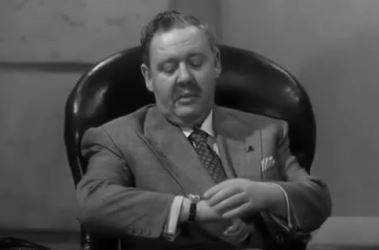




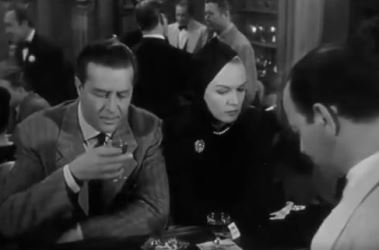
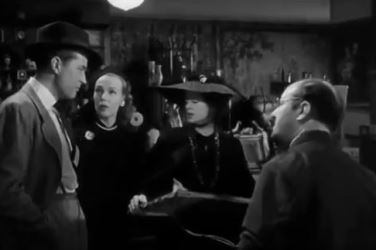
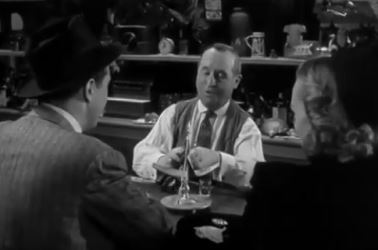
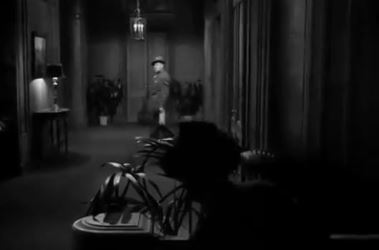



Good Evening Madhuji,
Very interesting story you posted with movie images.
I tried the link you gave, but it is displaying,
“This site can’t be reached. ok.ru unexpectedly closed the connection”.
Please advise and thanks for this very interesting article.
Blessings
Uma
LikeLike
I’m glad you enjoyed the review, Umaji.
I have no idea why you’re seeing that error message when you try to access the site – I just tried it again, and it’s opening fine on my computer. I don’t know where else you could find the film; it’s not a well-known one, it seems.
LikeLike
What an interesting premise, Madhu! I’ve never even heard of this movie, but oh, it sounds right up my street. I love crime thrillers. Thank you, though… WDIGTT??
LikeLike
If you like crime thrillers, Anu, this is one you must watch. If not now, sometime soon. Put this before others, that’s the answer to the WDIGTT question. ;-)
LikeLike
I didn’t know this was based on a book! Will look for it. I’ve seen this several times on TV, and liked it each time. Its newer version, No Way Out (starring Kevin Costner and Gene Hackman) is also very good. They’ve taken the basic plot of The Big Clock and made a spy thriller out of it. Check it out when you have time.
LikeLike
Ooh, I had no idea this had a newer version too. I must try and get hold of it. Thanks so much for telling me about that!
LikeLike
My clock’s a bit behind. It’s almost time for your next post.
The premise is so interesting. Will try and watch it.
LikeLike
Yes, do please try to watch it. It’s a very interesting movie.
LikeLike